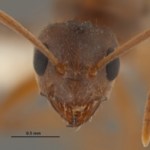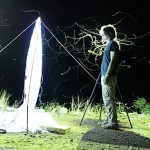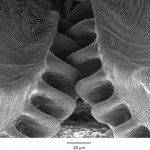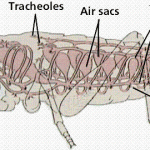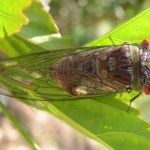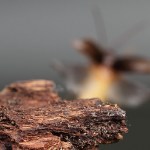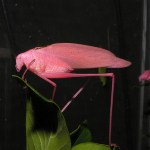insect
A new study shows that globally, spiders consume 400-800 million tons of prey each year. That's roughly more than double the amount of fish and meat that humans consume. Impressive...yet creepy at the same time. I suppose we should thank them for their pest control efforts.
Sources:
M Nyffeler, K Birkhofer. An estimated 400–800 million tons of prey are annually killed by the global spider community. The Science of Nature. 104: 30, 2017. doi:10.1007/s00114-017-1440-1
News Beat video from YouTube
I came across the "I Spy Physiology" blog today from the American Physiological Society. The blog focuses on physiological topics relevant to daily life. There are also a couple of comparative physiology gems in the blog that you can view using the links below:
How birds my help us understand diabetes
How research on walking stick insects may help us to understand how the brain times leg contractions to regulate walking
Pretty neat stuff!
New research from Vanderbilt University shows that hummingbirds and insects have a lot in common...when it comes to flying at least. The researchers placed nontoxic paint on the wing of a ruby-throated hummingbird at 9 different spots then videotaped the animal flying at 1,000 frames per second with 4 cameras simultaneously. Using 3D simulations of the hummingbird flight, they discovered that the tiny birds stir up air around their wings in a way similar to insects like mosquitoes and dragonflies.
Larger birds obtain much of their energy for flight from the downstroke of the wing as it pushes…
I have. So I surfed the web and found this neat video from Smithsonian that explains it all.
Image of cricket chips called "chirps" from Six Foods. (http://www.sixfoods.com/#product)
Crickets are the first insect to now be farmed for human consumption in the United States. I'll admit the thought of snacking on cricket flour-based chips is not exactly appetizing. But the process of farming insects over more traditional livestock seems to be less wasteful. Insect farming is a more efficient way of producing dietary protein as it takes much less feed and water to raise insects as compared to cattle. In addition, greenhouse gas emissions from crickets are much lower than…
Crazy ant image by Joe A. MacGown with the Mississippi Entomological Museum
Tawny (or Raspberry) crazy ants (Nylanderia fulva) are an invasive ant species from South America that have been invading the United States. For some reason, the ants are attracted to electronics and have been responsible for the destruction of numerous electronic devices.
A new study shows that tawny crazy ants rub formic acid over their bodies as a shield against fire ant venom. This conclusion came after researchers observed the ants rubbing themselves with formic acid after a confrontation with fire ants (…
Eran Levin in front of a blacklight screen.
Eran Levin, a postdoctoral researcher at the University of Arizona studies Hawk Moths. He used a technique called backlighting to catch them and in the process catches numerous other insects as well.
Moths navigate by keeping bright objects like the moon and stars at a constant angle. It turns out that artificial light disrupts the moths's detection of moonlight. They end up using the artificial light source as a navigation cue and as a result wind up circling the light bulb to keep it at a constant angle.
Check out his blog entry in Scientific…
Image of young planthopper by study author Malcolm Burrows.
Scientists have discovered what they believe is the first example of interacting gears in young planthopper insects, Issus coleoptratus. The gears are on the upper portion of the insect's rear legs and help ensure the legs work in unison when the insect jumps. These gears are lost as the animal ages and are thus rather like training gears.
Image of functional gears on the hind limb of a plant-hopping insect from study author Dr. Malcolm Burrows.
Dr. Malcom Burrows (Emeritus Professor of Neurobiology at the University of…
Another exciting day for Comparative Physiology! I just got back to my hotel after the wonderful dinner meeting overlooking the Harbor.
Of course, the research was exciting too :)
Here are the highlights from today's sessions:
Heinrich E, Bradley T. Univ California, Irvine I learned a lot about the insect tracheal system this morning. Insects do not have continuous gas exchange with environment like we do. Rather, gas exchange is discontinuous and involves valves, called spiracles:
Diagram of how insects breathe from www.breatheornot.wordpress.com
When carbon dioxide levels increase…
Entomologist Dr. Coby Schal at North Carolina State University studies the chemicals involved in insect communication in an effort to more effectively manage pests. His big interest is in chemical communication using pheromones and how they impact mating and other behaviors. His research has aided the control of cockroaches, bed bugs, mosquitoes and other nuisance bugs in major cities.
A very nice biography of his work was recently published in The Scientist. Some major discoveries that Dr. Schal made as a graduate student included observing that male cockroaches sit higher up in foliage in…
Image from Flickr EOL; Taken by Arthur Chapman
The animation below from Nature shows a bacteria rupturing after landing on nanopillars present on the surface of a clanger cicada (Psaltoda claripennis) wing. Dr. Ivanova (Swinburne University, Australia) and colleagues showed that nanopillars rupture the bacteria by straining the cell wall.
Some scientists see this as an opportunity to create anti-bacterial surfaces in public places simply by coating the surface of objects with nanopillars.
Sources:
Nature
Pogodin S, Hasan J, Baulin VA, Webb K, Khanh Truong V, Nguyen THP, Boshovikj V,…
Nature is big. Really big! The US National Weather Service revealed this image taken last Saturday showing a massive swarm of newly-hatched mayflies erupting from the Mississippi River near La Crosse, Wisconsin.
The swarm was captured using doppler radar, which is used to track the direction and velocity of distant objects (it's the same type of technology used by traffic police in speed guns). The National Weather Service says:
The bugs are showing up as bright pink, purple, and white colors along the Mississippi River mainly south of La Crosse, WI. After the bugs hatch off the water…
Mammal hairs preserved in amber specimen ARC2-A1-3. a - First fragment; b - Line drawing of first fragment; c - Second fragment; d - Line drawing of second fragment; e - Close-up of second fragment to show the cuticular surface.
About 100 million years ago, in a coastal forest located in what is today southwestern France, a small mammal skittered up the trunk of a conifer tree. As it did so it lost a few of its hairs, and this minor event would have been entirely unremarkable if two of those hairs had not settled in some tree sap and, in the course of time, become entombed in a piece of…
The mighty insect colonies of ants, termites and bees have been described as superorganisms. Through the concerted action of many bodies working towards a common goal, they can achieve great feats of architecture, agriculture and warfare that individual insects cannot.
That's more than just an evocative metaphor. Chen Hou from Arizona State University has found that the same mathematical principles govern the lives of insect colonies and individual animals. You could predict how quickly an individual insect grows or burn food, how much effort it puts into reproduction and how long it lives…
tags: animals, hummingbirds, insects, biology, streaming video
This is a lesson in observation. This is a North American animal. I know what this is (and I knew as soon as I saw the still image on the video) but I am asking you: what is this; hummingbird or insect? And for a bonus, can you tell me the species?
This is a Common Clearwing, also known as the Hummingbird Clearwing Moth, Hemaris thysbe.
REMOTE-CONTROLLED insects may sound like the stuff of science fiction, but they have already been under development for some time now. In 2006, for example, the Defense Advanced Research Projects Agency (DARPA, the Pentagon's research and development branch) launched the Hybrid Insect Micro-Electro-Mechanical Systems program, whose ultimate aim is to turn insects into unmanned aerial vehicles.
Such projects provide proof of principle, but have met with limited success. Until now, that is. In the open access journal Frontiers in Integrative Neuroscience, a team of electrical engineers led by…
If you've ever complained about having bad sex, you really have no idea. Human women may have to complain about poor stamina or incompetent technique but the female seed beetle (or bean weevil; Callosobruchus maculatus) has to contend with her partner's nightmarish penis - an organ covered in hard, sharp spikes. Just see if you can look at the picture on the right without wincing.
It's no surprise then that females sustain heavy injuries during sex. But why have male beetles evolved such hellish genitals? What benefits do they gain by physically harming their partners?
It's possible that…
The Audubon Insectarium in New Orleans just bred these rare pink katydids and I find them captivating/delicious.
Pink Katydid Facts:
⢠The parental katydids, both pink, were brought to Audubon Insectarium during
the summer of 2008 as donations by visitors.
⢠The pink katydids were sent off to Cokie Bauder, Manager of Animal Collections
at the Insectarium's Insect Rearing Facility, for supervision and care.
⢠The pink katydids are oblong-winged katydids, Amblycorypha oblongifolia.
⢠This unusual katydid coloration was first written about in a scientific article in
1878.
⢠The first…
Once again Zooillogix reader-in-the-field extraordinaire Tweet Gainsborough-Waring (yes, that is her real awesome name), delivers the steamy shots you all have been unwittingly waiting for:
Peppermint Stick Insects getting down in Queensland, Australia!
LonelyPeppermintStick23 - Looking for a male who knows his way around an ovipositor and isn't afraid to get kinky with your Malpighian tubules? Call tonight as I only live for another 3 days.
Tweet was kind enough to share the following info on these stunning critters:
The spikey -leaved pandanus palms bordering the beach provide the perfect…

